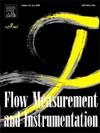A case study on the application of a mechanical system in a Mexican gas well with liquid loading issues
IF 2.3
3区 工程技术
Q2 ENGINEERING, MECHANICAL
引用次数: 0
Abstract
This work presents the application of a mechanical system to improve the flow pattern (MSIFP) in a conventional liquid-loaded well issue, located in the northern region of Mexico. The well is drilled in a reservoir of hydraulically fractured sands characterized by low permeability ranging from 0.1 to 0.01 millidarcy (mD). In this challenging environment, hydrocarbon production decreases due to liquid loading, reservoir pressure reduction, and intermittent flow patterns along the production pipeline. The methodology used integrates mechanistic models with dynamic records of pressure and temperature to estimate energy losses during fluid transport from the wellbore to the surface. The method involved installing the MSIFP and analyzing changes in flow patterns, specifically, the transition from slug flow to churn and mist flows. The geometry of the flow pattern improver system is selected based on current production conditions and fluid properties. Results showed a significant increase in gas production from 8.9 to 20.36 m3/day, alongside improved efficiency in liquid transport. As a result, production in the well increased by 128 % while preserving reservoir energy. This approach enhances well performance, prolonging the well's lifespan and providing a practical solution to common liquid-loading challenges in gas wells. These findings are based on comparing hydrocarbon production before and after installing the system at the well bottom.
机械系统在墨西哥某气井中应用的实例研究
这项工作介绍了在墨西哥北部地区的一口常规液载井问题中应用机械系统改善流动模式(MSIFP)的情况。这口井是在水力压裂砂储层中钻探的,该储层具有 0.1 至 0.01 毫达西(mD)的低渗透率。在这种极具挑战性的环境中,由于液体负载、储层压力降低以及生产管道沿线断断续续的流动模式,碳氢化合物产量下降。所使用的方法将力学模型与压力和温度的动态记录相结合,以估算从井筒到地面的流体输送过程中的能量损失。该方法包括安装 MSIFP 并分析流动模式的变化,特别是从蛞蝓流向搅动流和雾状流的过渡。流型改进系统的几何形状是根据当前的生产条件和流体特性选择的。结果显示,天然气产量从 8.9 立方米/天大幅增加到 20.36 立方米/天,同时液体输送效率也有所提高。因此,在保持储层能量的同时,油井产量增加了 128%。这种方法提高了油井的性能,延长了油井的使用寿命,并为气井常见的液体负载难题提供了实用的解决方案。这些发现基于在井底安装该系统前后碳氢化合物产量的比较。
本文章由计算机程序翻译,如有差异,请以英文原文为准。
求助全文
约1分钟内获得全文
求助全文
来源期刊

Flow Measurement and Instrumentation
工程技术-工程:机械
CiteScore
4.30
自引率
13.60%
发文量
123
审稿时长
6 months
期刊介绍:
Flow Measurement and Instrumentation is dedicated to disseminating the latest research results on all aspects of flow measurement, in both closed conduits and open channels. The design of flow measurement systems involves a wide variety of multidisciplinary activities including modelling the flow sensor, the fluid flow and the sensor/fluid interactions through the use of computation techniques; the development of advanced transducer systems and their associated signal processing and the laboratory and field assessment of the overall system under ideal and disturbed conditions.
FMI is the essential forum for critical information exchange, and contributions are particularly encouraged in the following areas of interest:
Modelling: the application of mathematical and computational modelling to the interaction of fluid dynamics with flowmeters, including flowmeter behaviour, improved flowmeter design and installation problems. Application of CAD/CAE techniques to flowmeter modelling are eligible.
Design and development: the detailed design of the flowmeter head and/or signal processing aspects of novel flowmeters. Emphasis is given to papers identifying new sensor configurations, multisensor flow measurement systems, non-intrusive flow metering techniques and the application of microelectronic techniques in smart or intelligent systems.
Calibration techniques: including descriptions of new or existing calibration facilities and techniques, calibration data from different flowmeter types, and calibration intercomparison data from different laboratories.
Installation effect data: dealing with the effects of non-ideal flow conditions on flowmeters. Papers combining a theoretical understanding of flowmeter behaviour with experimental work are particularly welcome.
 求助内容:
求助内容: 应助结果提醒方式:
应助结果提醒方式:


